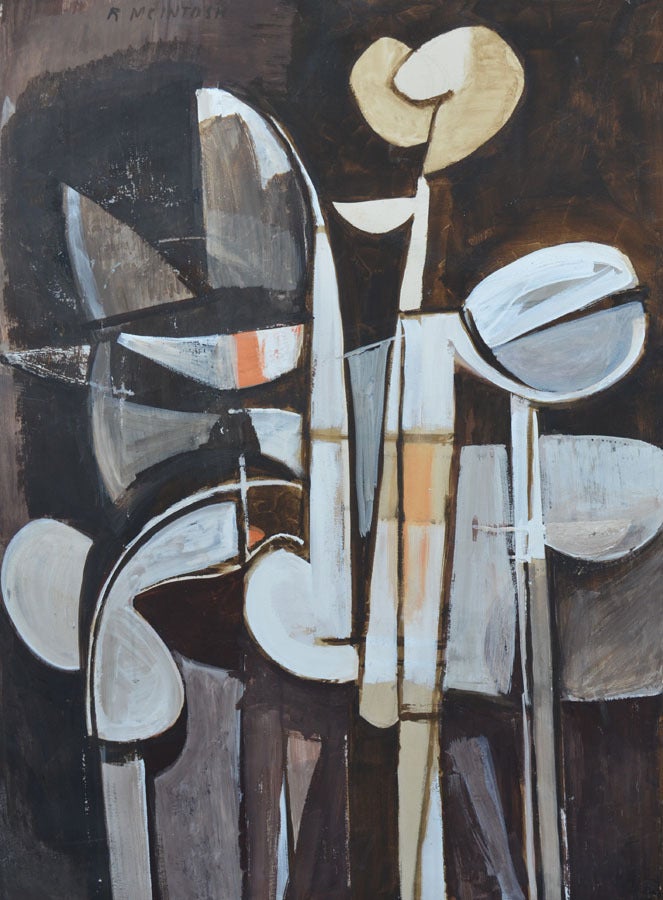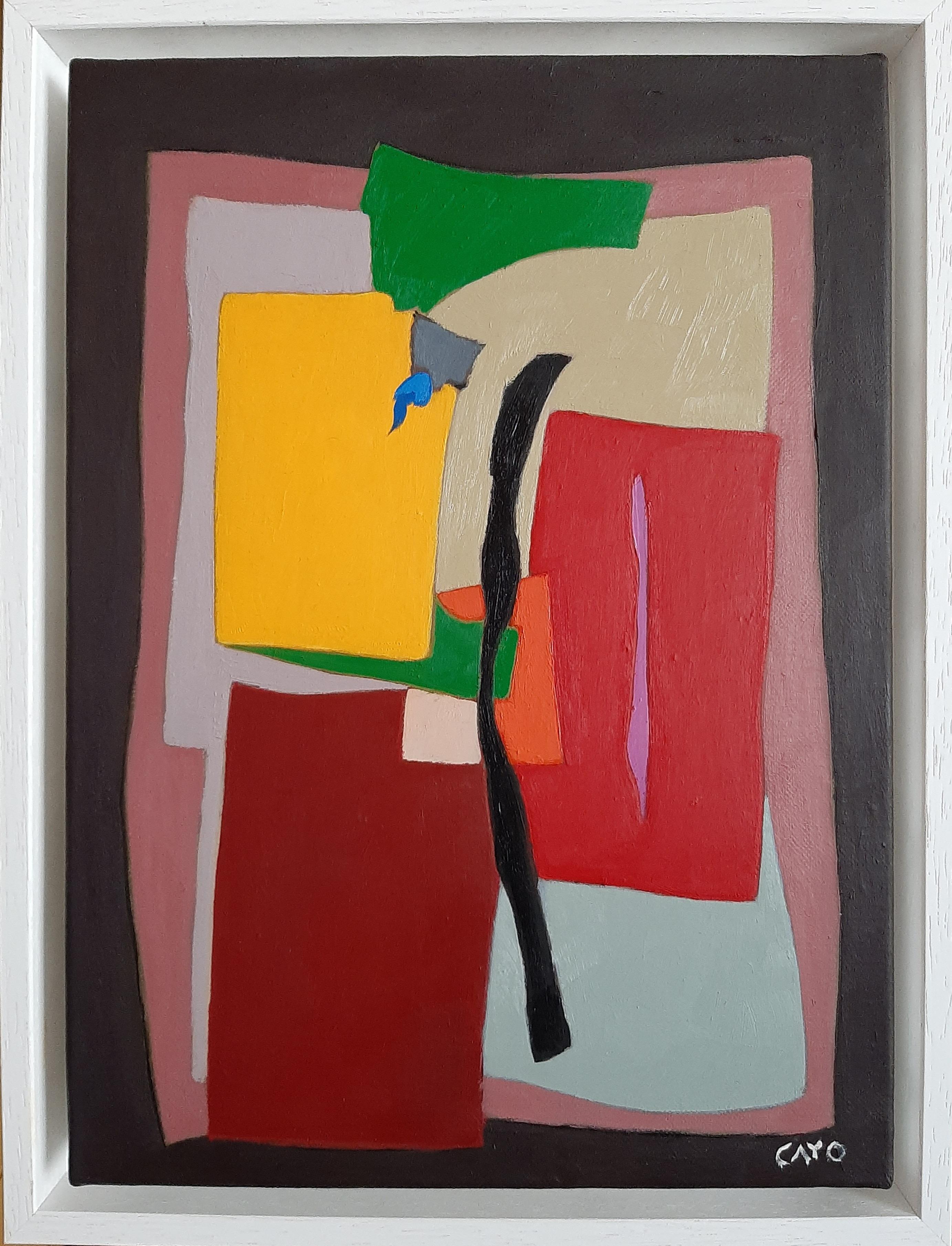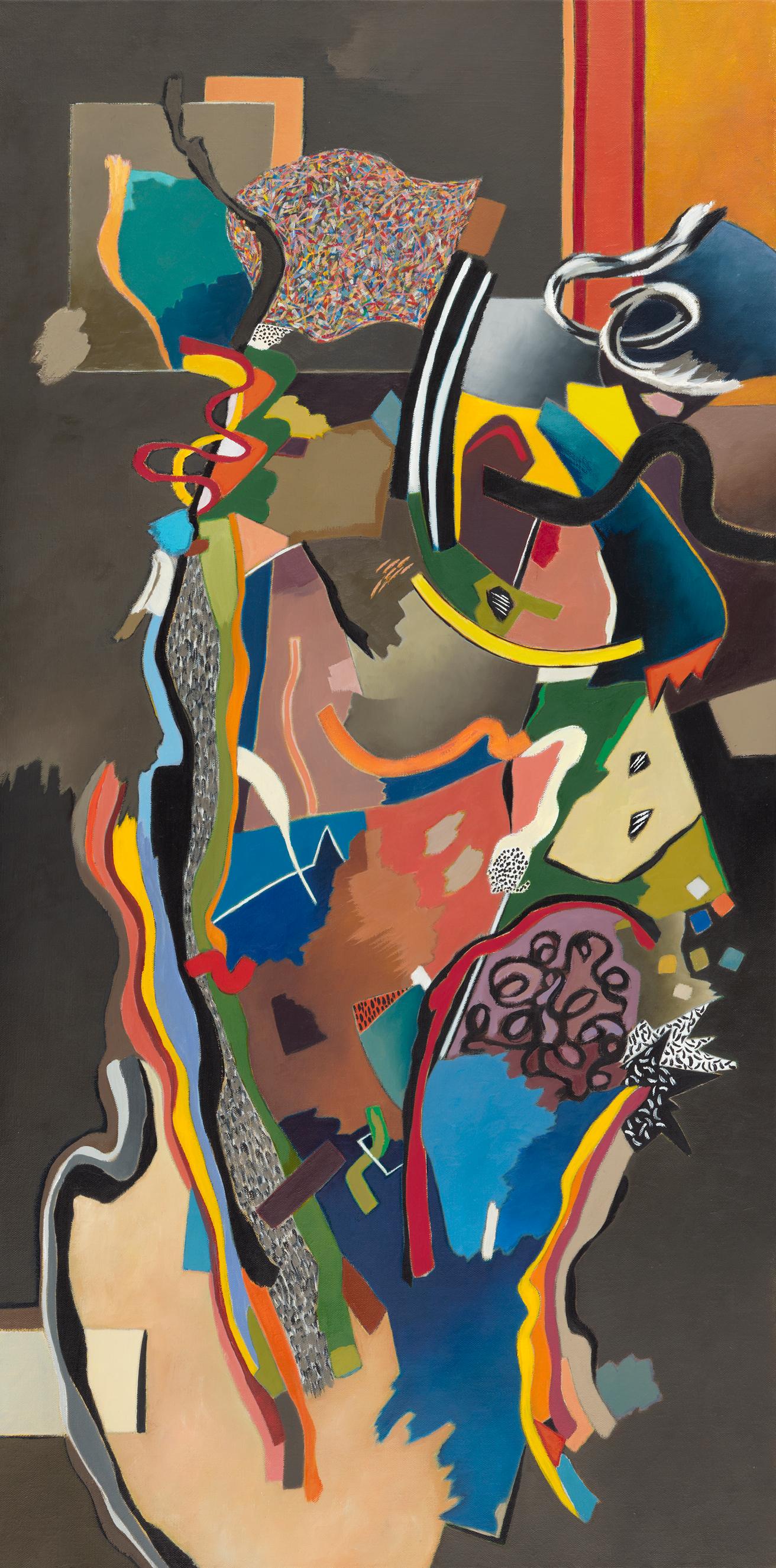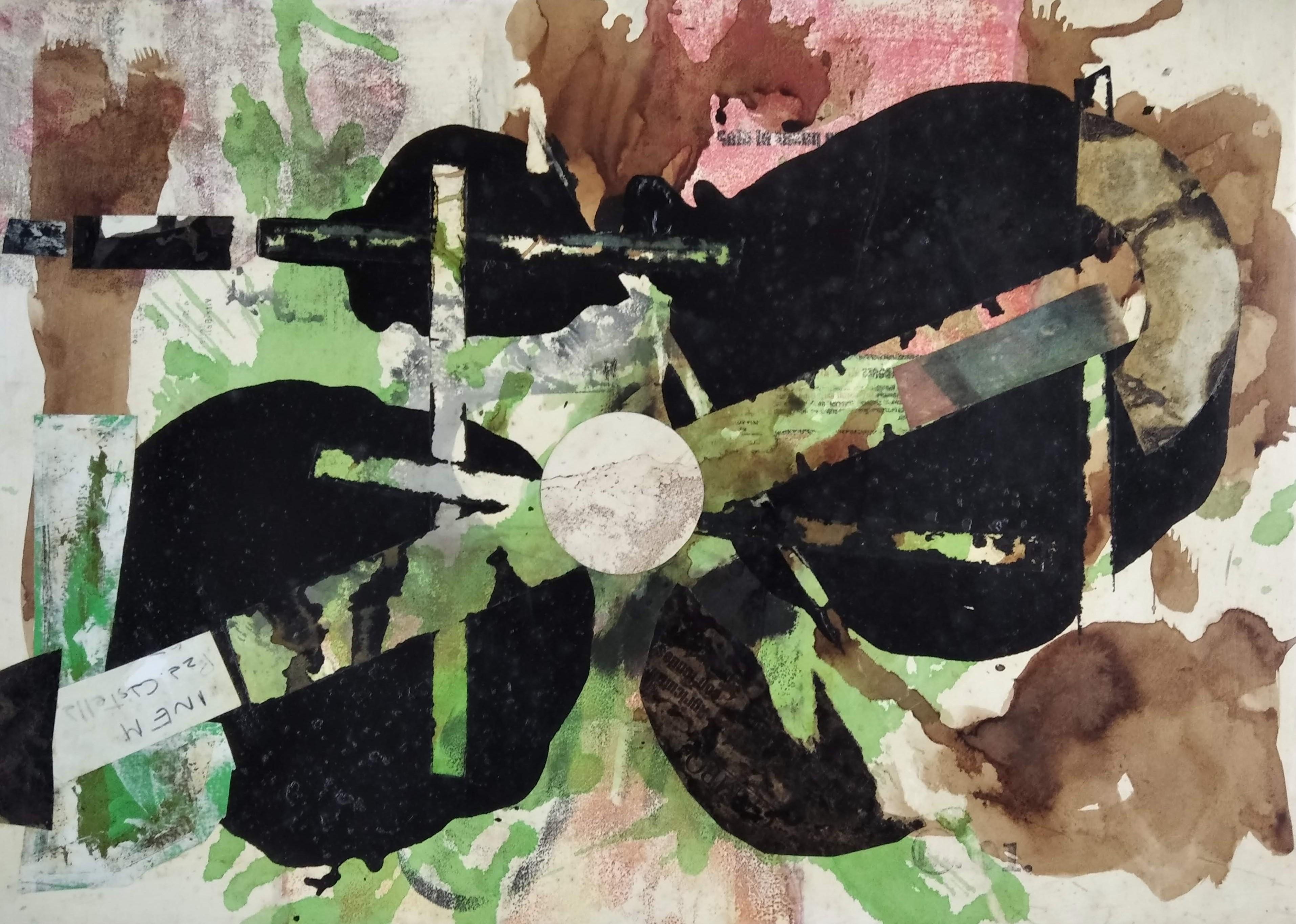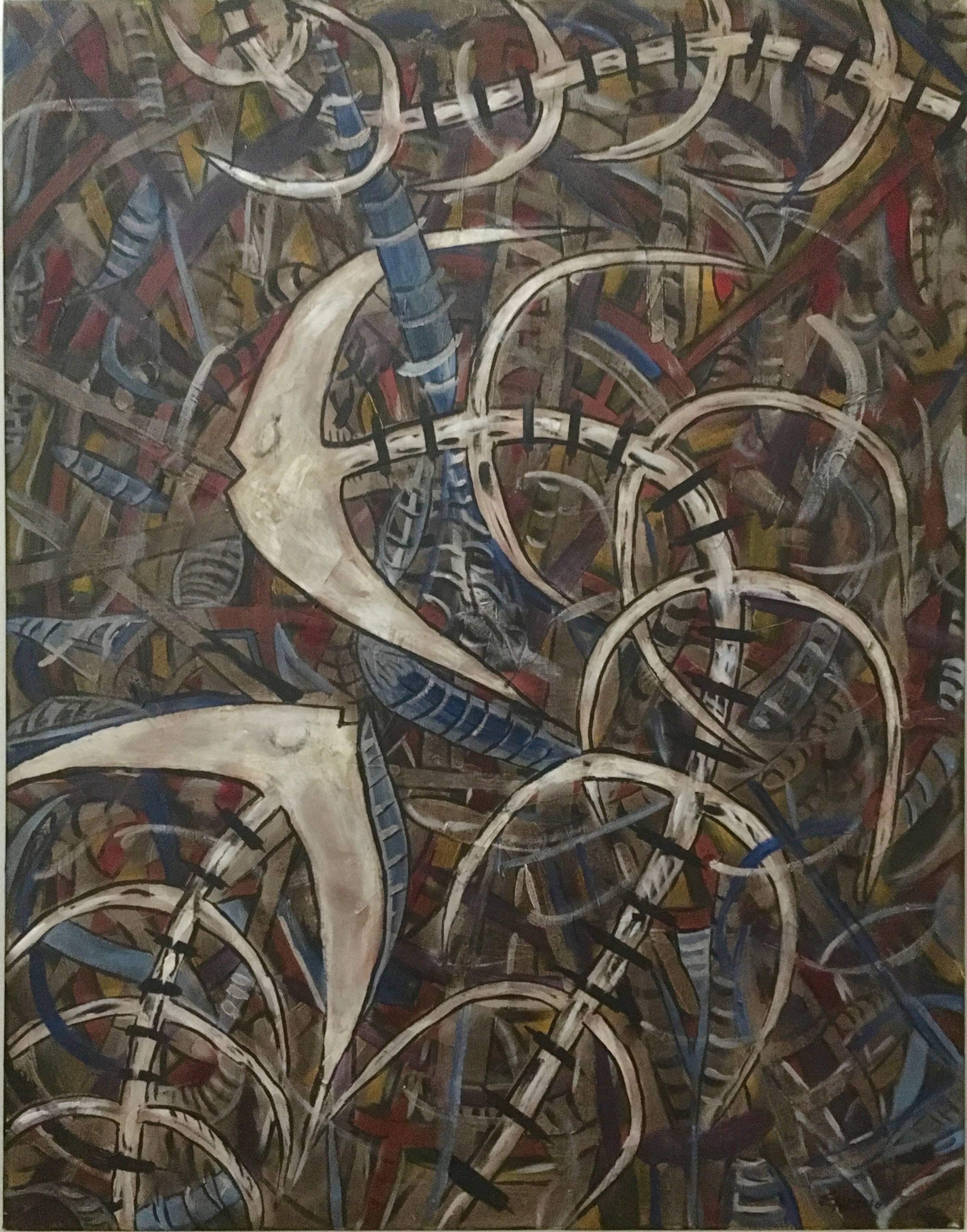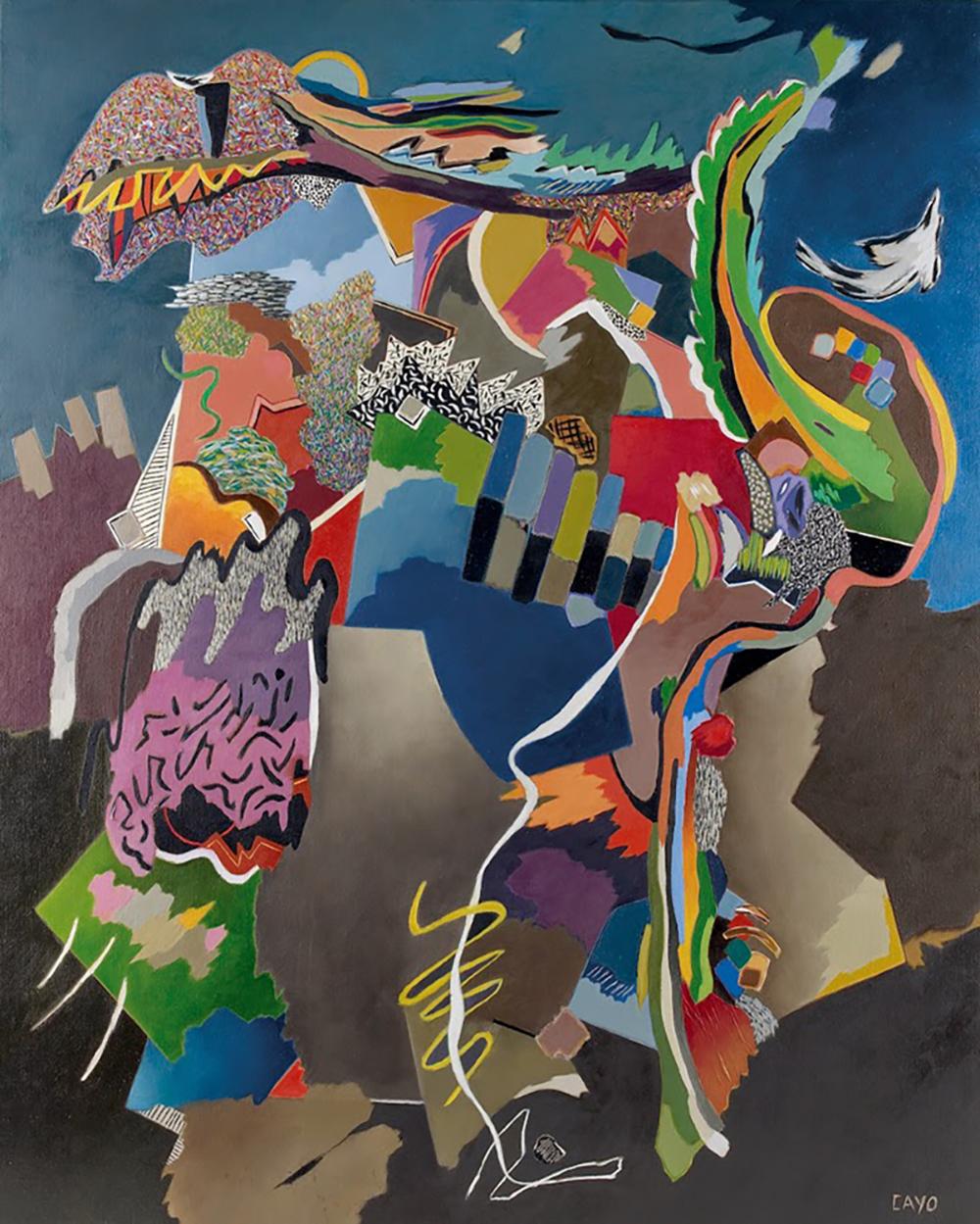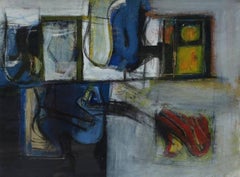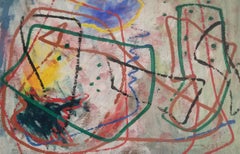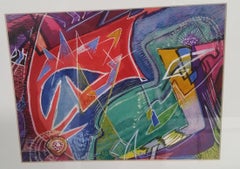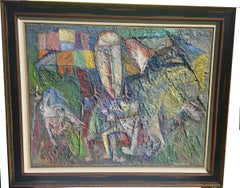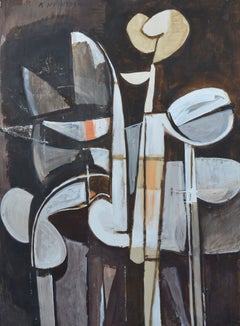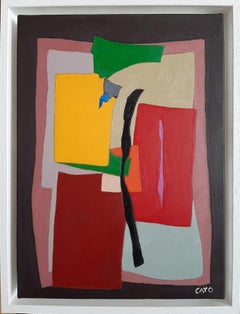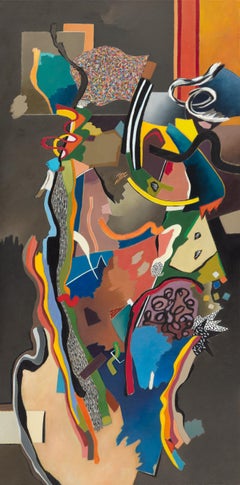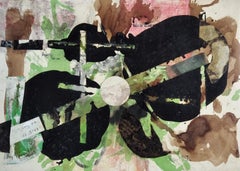Items Similar to Family of Forceps
Want more images or videos?
Request additional images or videos from the seller
1 of 6
David SolotFamily of Forceps1955
1955
$8,000
£6,155.15
€7,033.81
CA$11,449.91
A$12,485.92
CHF 6,559.18
MX$149,651.23
NOK 83,176.84
SEK 77,403.88
DKK 52,534.86
About the Item
Signed lower right.
David Solot, a dentist and painter, was born in Falciu (Romania) and
settled in Paris in 1928. His art was surrealistic dentally inspired plus
portraits and city landscapes.
****************************
Translated from an article by Luana Hrisanti Rigot:
"In 1956, at the Charlotte Norberg Gallery (Paris), he presented his first personal exhibition, composed of an ensemble of surrealist paintings of professional inspiration (dental elements). Two years later, at Gallery Royale (Rochefort), he exhibits another 50 paintings on the subject. At that time, a decisive event for the painter David Solot was made: a great new-York-born antibiotic producer Lederle Cy learns about his work and contacts him through the US Ambassador to Paris, proposing an advertising contract and buying the reproduction right for 24 of its canvases. A year later, the same company bought the right to print three of its cloths in color. This was the starting point of his international notoriety.
In 1959, the American Dental Association celebrated its centenary, and to make it brilliant, David Solot invites him to a large exhibition at Columbus Circle, in Manhattan New York. The press, television is doing a great deal of promotion, and in the end, the interest shown by the medical professionals in the beginning only reaches an echo in the world of passionate art collectors. It is the beginning of a major international adventure!
David Solot is invited to Stockholm in 1960, then to Dublin and Belfast by the Cema Art Gallery. In 1962 his works are exhibited in Helsinki.
In 1963 his life was disturbed by a very painful event ... His only son, a medical student in the last year, dies in an accident. For two years, overwhelmed by pain, David Solot neglects painting. His wife, Becutza Solot, encourages him to go to Israel. David accepts, and the voyage and exhibition (1965) are successful.
When returning from the voyage, he makes material for an exhibition he will present at the Transposition Gallery, while at the Salon of Physicians his "Jerusalem" painting gets the Medal of Honor, the greatest possible reward.
Continuing to work on all plans, he adds a new activity to his concerns: writing. In 1967, he was impressed by a passage in Maurice Goudeket book Prés de Colette and writes a script to the author of the book.
In 1969, David Solot suffered a new blow, his wife suffered a stroke. During this period, he wrote a play "Le procés du Docteur. Tabart", whose subject matter is in the period immediately following the Second World War, and in which the author associates personal memories with imagined situations.
In 1976, his wife died after a long suffering.
In 1975, David Solot met a filmmaker, who saw his bands propose to make a short feature. It was a 18-year dream project! The script will bear the title of one of its "Molars Revolt", a symbol of the struggle between life and death. The film is made and is very successful in the professional world, both in France and abroad.
On July 1, 1976, David Solot retired.
Robert Vrinat, a French art journalist, writes a book about his life, titled 'David Solot', published in 1978 by Editions Vision Sur les Art - Paris." Introduction was written by his American dental colleague Jaroslaw Pikolycky DDS.
Dr David Solot died in 1985 in Choisy-le-Roi, France
About the Seller
4.2
Vetted Professional Seller
Every seller passes strict standards for authenticity and reliability
Established in 1992
1stDibs seller since 2015
32 sales on 1stDibs
Typical response time: 16 hours
- ShippingRetrieving quote...Shipping from: Saratoga Springs, NY
- Return Policy
More From This Seller
View AllAbstract
By Harry Nadler
Located in Saratoga Springs, NY
Singed verso.
An abstract painter who lived in New York City; Amagansett, Long Island, and Albuquerque, New Mexico, Harry Nadler is described as a "formalist abstract painter of t...
Category
Abstract Abstract Paintings
Materials
Archival Paper, Mixed Media
$4,500
Abstract
By Rolph Scarlett
Located in Saratoga Springs, NY
Signed lower right.
A major exponent of non-objective painting, Rolph Scarlett's career and artistic philosophy is closely linked with the early history of the Solomon R. Guggenheim...
Category
Mid-20th Century Abstract Abstract Paintings
Materials
Oil, Paper
$5,000
Abstract
By Rolph Scarlett
Located in Saratoga Springs, NY
Rolph Scarlett (Canadian/American, 1889 - 1984)
“Abstract”
Signed and dated 1947, lower right
Gouache on paper
Provenance: Private collection, Miami Florida
About
Rolph Scarlett w...
Category
1940s Abstract Abstract Paintings
Materials
Gouache
Reminiscence
By Victor Khromin
Located in Saratoga Springs, NY
Signed lower right.
Provenance: Khromin Estate.
Victor Khromin, born in Gatchina City, near St. Petersburg, Russia explored his artistic abilities from the earliest years of his life. The Russian-Finish family into which Victor was born discovered and accepted his talent as something that flowed organically through their family tree. Victor's grandfather was an accomplished artist and a student of Repin at the Academy of Art in St. Petersburg, Russia.
The scenery of childhood in a small Finnish village on the outskirts of St. Petersburg continues to inspire Victor throughout his life.Victor went on to study art professionally at the Serov School of Fine Art in Leningrad. While still a student, he actively participated in non-conformist exhibitions, which were illegal during the Soviet Regime. In 1976, Victor became a member of the USSR Union of Professional Artists. This was the only Soviet organization, which could recognize an individual as a career artist. Despite membership, he continued to exhibit his works as part of the Underground Art Movement, which contradicted the code of conduct outlined by the USSR Union of Professional Artists and rejected the only officially accepted style of Socialist Realist. Victor's works stopped being presented for exhibition within official circles of the Soviet Art League. Victor became a target for government harassment and monitoring.
The 1985 solo exhibition at the Kudamm Gallery, in Berlin, served as a breaking point in the semi-tolerant relationship that had previously existed between Victor and the USSR Union of Professional Artists. According to the Union, an artist was not allowed to exhibit outside of the USSR without the permission of and censorship by that organization. That same year, Victor lost the position, which he had obtained through the Union. He relocated to a small village called Sinicheno, where over the course of 5 years, he created a series of lyrical pieces. The works were displayed at a solo exhibition at Dianart Gallery in Zurich in 1988, and at Arcole Auction, Paris in 1988-1990.The Perestroika finally opened doors for Victor to exhibit within Russia at "From Unofficial Art to Perestroika," in Leningrad in 1989 and The Stanislavski Actor's House in Leningrad in 1990.
In 1990, Victor received an invitation to come to New York City for a Solo exhibition at Nahamkin Gallery. During this trip, Victor applied for legal residency within the United States and was granted this status for his Extraordinary Abilities in Art. In 1996, Victor's paintings become part of the Norton and Nancy Dodge Collection of Nonconformist Art at Rutgers University. From this point on, Victor and his family move to rural upstate New York. Here he continues the development of unique techniques for creating 3D casts for oil paintings and paper. Victor's recent works are hand-made paper reliefs, with acrylic used as a color addition to the texture. He also developed a relining technic, which allow him to transfer his reliefs to canvas, and then work with oil paint over the underlying relief.
He has also been represented by Jane Voorhees Zimmerli Art Museum of The Norton & Nancy Dodge Collection of Nonconformist Art from the Soviet Union (1956-1986) at Rutgers University, New Brunswick, NJ; Dianart Gallery, Zurich, Switzerland; Kudam Gallery in Berlin, Germany; Codriorg Pallas Museum , Tallinn, Estonia; Urmala Exhibition Hall, Urmala, Latvia; Regional exhibition in Russia, and solo exhibitions in St. Petersburg, Russia, etc.
The specific style category...
Category
1990s Abstract Abstract Paintings
Materials
Marble
New Year
By Enrico Donati
Located in Saratoga Springs, NY
Signed & dated verso, 1992
Enrico Donati, a surrealist and abstract expressionist painter, was born in Milan, Italy in 1909 and died in Manhattan on April 25, 2008. He was known for his association with the surrealist movement of the 1940's, but his artwork continued to transform itself through the many trends that have occurred during his long career. In Italy he attended the Universita degli Studi in Pavia where he studied economics. In 1934, he moved to the United States settling in New York where he studied at the New School for Social Research and the Art Students' League.
Considered the surviving dean of the Surrealist Movement and a member of the New York School, Donati painted with Ernst, Matta and Tanguy in the thirties and forties, and in particular with Andre Breton, regarded by many to be the grand master of Surrealism.
He helped organize the Exposition Internationale du Surrealisme in Paris in 1947 where he exhibited three of his pieces. The Surrealists were known to avoid presenting or representing reality, and put the emphasis on invention and creativity by uncovering the poetic aspect of life with its kaleidoscopic multidimensional images, using reality only to enhance imagination.
Donati survived the decline of Surrealism in the late 1940's by adapting his style to current art trends as he worked with new materials and textures throughout the 1950's.
One trend with which he became involved was Abstract Expressionism, which originated in the 1940s, and became popular in the 1950s. It was a movement in which artists typically applied paint, rapidly and with force, to large canvases, in an effort to show feelings and emotions. Paint might be applied with large brushes, sometimes dripping or even throwing it onto canvas. Abstract Expressionist work is characterized by a strong dependence on what appears to be accident and chance, although it is actually highly planned.
Donati held a retrospective at the Palais des Beaux-Arts in Brussels in 1961 and went on to exhibit at the Betty Parsons Gallery with other forerunners of American Abstract Expressionism: Mark Rothko, Barnett Newman, and Jackson Pollock. It was at this time that Donati created some of his most inventive and extraordinary work, some of which was featured in a survey exhibition at the Alter & Gil Gallery, Beverly Hills, California, in January 2000.
He has held many teaching positions and has been an active lecturer, while continuing to add to his artistic repertoire. From 1960 to 1962 he was a Visiting Lecturer at Yale University, and from 1962 to 1972 a Member of the Yale University Council for the Arts and Architecture.
He has had seventy-five one-man shows, among them an exhibit of new paintings at the Maxwell Davidson Gallery (57th St., New York) in the fall of 1997. Donati's work is held in collections throughout the world, and his work has appeared in over 300 articles and publications, two hard cover books...
Category
1990s Abstract Abstract Paintings
Materials
Cotton Canvas, Mixed Media
$25,000
Untitled
By Rolph Scarlett
Located in Saratoga Springs, NY
Signed lower left.
This is a large example of a non-objective painting by Rolph Scarlett. Scarlett was a painter of geometric forms and shapes. His intuitive style helped establish ...
Category
Mid-20th Century Abstract Abstract Paintings
Materials
Canvas, Oil
$50,000
You May Also Like
Family
By Robert McIntosh
Located in West Hollywood, CA
We are proud to present the following suite of just discovered, mixed media paintings, c.1957, by American artist Robert McIntosh(1916-2010)
Robert McIntosh was extremely prolific...
Category
1950s Abstract Paintings
Materials
Oil
French Abstract Contemporary Art by Daniel Cayo - Untitled
By Daniel Cayo
Located in Paris, IDF
Oil on canvas
33 x 24 x 3 cm
Framed in a white American box
Daniel Cayo is a French artist born in 1947 who lives & works in Eragny sur Oise, France. According to the artist, contem...
Category
2010s Abstract Paintings
Materials
Canvas, Oil
French Abstract Contemporary Art by Daniel Cayo - Figure 3
By Daniel Cayo
Located in Paris, IDF
Oil on canvas
Category
2010s Abstract Abstract Paintings
Materials
Canvas, Oil
Untitled
Located in Barcelona, BARCELONA
The painting is being offered with a work and authenticity certificate
Category
Early 2000s Abstract Abstract Paintings
Materials
Mixed Media
Cuban Artist Emilio Martinez Untitled 1
By Emilio Adan Martinez
Located in Surfside, FL
Emilio Adan Martinez was born in Cienfuegos, Cuba, in 1954. In 1961 at the age of six he immigrated to Miami with his family. He earned his BFA from Florida International University ...
Category
21st Century and Contemporary Contemporary Abstract Paintings
Materials
Oil
French Abstract Contemporary Art by Daniel Cayo - Promethée
By Daniel Cayo
Located in Paris, IDF
Oil on canvas
Category
2010s Abstract Abstract Paintings
Materials
Canvas, Oil
